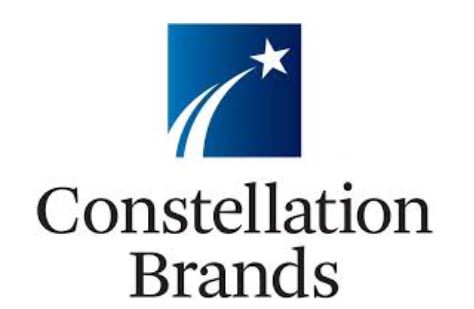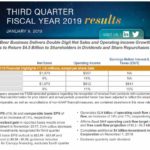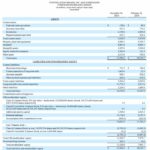Contents
Summary
- Constellation Brands (STZ) issued Q3 2019 results and provided lower guidance. Mr. Market did not react positively and STZ’s share price dropped ~12.40% on January 9th.
- In August 2018 when I purchased January 2019 2 Call $190 contracts I knew I was speculating. Those contracts are now of no value.
- With STZ’s superior valuation following the January 9th stock price plunge I look at whether it is now a worthwhile investment.
Introduction
On August 28, 2018 I published a Constellation Brands’ (NYSE: STZ) related article in which I indicated I wished to be in a position to benefit from its investment in Canopy Growth (TSX: WEED) even though I was highly reluctant to acquire shares for various reasons, one of which is that STZ is far more speculative in nature than all my other holdings.
Long-term investors once knew STZ to be a ‘spirits’ business but in recent years, STZ has undergone a transformation and is now heavily pursing new growth opportunities. Further details on STZ’s diversification into the cannabis industry can be found in its Q2 FY2019 Investor Overview Presentation (link provided below).
Source: STZ – Q2 FY2019 Investor Overview Presentation
In my August 28th article I indicated:
‘There will be some shake out within this industry over the next several months / few years but I think STZ/CGC will end up being a formidable player. In my opinion, however, there are far too many uncertainties at this point in time for my liking and I would prefer to be cautious with any investment that is cannabis related. I do, however, I want the opportunity to participate in potential upside; I am of the opinion STZ will rise in value over the next few months.
Rather than purchase STZ shares outright thus requiring a significant cash outlay, I have decided to employ the use of options which allows me to gain exposure to STZ without having to lay out a significant amount of cash up front.
There is certainly a downside risk to the strategy I have employed but I have calculated my risk of potential loss in a scenario where STZ’s shares tumble below its 52-week low of ~$195.96; I am prepared to accept the downside risk.’
In that article I outlined the option transaction into which I had entered.
My STZ Call purchase was the first time I had purchased any option contract in at least the past 7 – 8 years; all previous option transactions had been from the position where I was the option seller. Several years ago I had, on the very rare occasion, purchased calls but only as part of a two sided option trade.
Since option contracts have a time value that erodes as we get closer to the contract’s expiry date, I have benefited from the passing of time with my previously written option contracts. In the case of my STZ options, however, the passing of time worked against me.
I had purchased 2 January 2019 $190 contracts @ $25.60 for a total outlay of $5,120 so for the first several weeks, the rise in STZ’s stock price worked in my favor.
If you look at STZ’s stock chart you will see that STZ’s stock price rose to ~$227 by mid-October meaning I could have closed out my position for at least a $2300 profit (($227 - $190)*200 shares) minus the $5,120 outlay (I am excluding commission and am not factoring in any time value benefit of the contract - there were 3 months remaining until expiry).
In hindsight, insider sales by the Chairman of the Board (Richard Sands): 148,773 shares sold on October 21st and the CEO (Robert Sands): 151,060 shares sold on October 21st should have been a warning sign. I have, however, seen a number of instances in which insiders have sold shares only to have the company’s share price rise in value.
What I have found is that insider purchases tend to be a vote of confidence in the company but insider sales can be for various reasons and not just because an insider thinks the company’s share price is going to drop in value (eg. estate planning, tax planning, or other purposes). In addition, the sale of this many shares still leaves the Sands with a significant number of STZ shares so I didn’t think they were ‘bailing’ on STZ.
In this case, however, STZ’s share price has fallen reasonably steadily subsequent to the October 21st share sales.
With just over a week to the expiry of the option contracts, the options are worth pennies and to close out my position would cost me more in transaction charges than I would salvage from my outstanding contracts.
I also very highly doubt that STZ’s stock price will surge above $190 prior to the January 18th expiry given that on January 9th STZ issued its Q3 results and provided lower earnings guidance for the year.
I am certain you can think of many lessons one can learn from my STZ speculative trade. Personally, this relatively inexpensive lesson has reinforced my opinion that I am the type of investor who should just stick to investing in higher quality companies at reasonable valuations for the long-term.
In the remainder of this article I look at STZ’s YTD revised guidance for FY2019, its current valuation, and whether the current valuation presents an opportunity to actually take a stake in the company…..for those with a higher risk tolerance level than me.
Q3 2019 Financial Results and FY2019 Outlook
On October 4th, STZ released its Q2 results at which time it indicated, amongst other financial results/projections, that it was increasing its fiscal 2019 reported basis EPS outlook to $14.10 - $14.25 and comparable basis EPS outlook to $9.60 - $9.75; these projections excluded the impact of the pending additional investment in Canopy Growth Corporation.
On January 9th, STZ released its Q3 results (the Q3 10-Q filed January 9, 2019 can be accessed here) at which time it informed the investment community of:
- a 36% decrease in reported EPS;
- a $164 million decrease in the fair value of its Canopy investments;
- a reduction in FY2019 reported basis EPS outlook to $12.95 - $13.05 and comparable basis EPS outlook to $9.20 - $9.30; guidance includes additional interest expense for Canopy financing and excludes 4th quarter Canopy equity earnings.
Fortunately, STZ continues to generate strong operating cash flow and free cash flow and its FY2019 operating cash flow target of ~$2.45B and free cash flow projection of $1.2 - $1.3B have been affirmed.
Goodwill, Intangible Assets, Equity Method Investments, and Other Assets
STZ’s Balance Sheet has certainly changed dramatically subsequent to its February 28, 2018 fiscal year end.
These ‘soft assets’ represented ~61% and 60% of Total Assets as at FYE 2017 and FYE2018. As at November 30, 2018, however, they represent ~69% of Total Assets. A good chunk of the increase is related to STZ’s higher stake in Canopy Growth.
It is far too difficult for me to ascertain the true value of Canopy Growth since it is a company engaged in a business which is about to undergo radical change over the next few years. While STZ’s stake may be worth what is reported on the November 30, 2018 Balance Sheet, there are other major players taking stakes in Canopy Growth competitors. How the cannabis industry shakes out over the next few years could result in Canopy Growth being worth far less or far more than its current value.
Debt
STZ has taken on a considerable amount of long-term debt over the past year (refer section 12 - Borrowings found in STZ’s 2018 10-K which starts on page 81 of 158 and section 10 - Borrowings found in STZ’s 2019 Q3 10-Q which starts on page 20 of 71).
While STZ’s credit ratings are stable and are not under review, STZ’s Balance Sheet is very different from a year ago!
The short-term borrowings and current maturities of long-term debt as at November 30, 2018 amount to ~$1.8B.
Note that STZ only had ~$0.275B in working capital as at November 30, 2018. I fully expect STZ will have addressed the minimal working capital issue before FYE2019.
Credit Ratings
STZ’s long-term unsecured debt credit rating was upgraded by Moody’s to Baa3 from Ba1 in January 2017 and its Baa3 rating was reaffirmed August 15, 2018. This rating is the lowest tier within the investment grade category.
S&P Global has accorded a BBB long-term unsecured credit rating as at April 2018. This rating is one notch higher than that accorded by Moody’s.
While STZ’s long-term unsecured debt credit rating has been upgraded by Moody’s 3 times subsequent to May 2011, the current ratings from both credit rating agencies means there is minimal margin for error before STZ’s long-term unsecured debt falls into the non-investment grade speculative category.
The other thing to consider is that STZ’s long-term credit rating is inferior to that of several of its competitors (Brown-Forman, Diageo, Kirin, Asahi, Anheuser-Busch, Heineken, Beam Suntory (private company), Pernod Ricard, and Carlsberg.
The inferior credit ratings relative to several of its peers is one of the reasons why I was not prepared to take a direct position in STZ and why I limited myself to the purchase of only 2 Call option contracts.
Valuation
At the time of my August 28th article, STZ’s current mean adjusted EPS estimate for FY2019 from 20 analysts was $9.46 with the low and high estimates being $8.93 and $9.94. Using the August 27th stock price of ~$207.50 and the mean EPS estimate of $9.46, I arrived at a forward adjusted PE of ~21.93 which was lower than PE levels in the mid and upper 20s reported in FY2014 – FY2018.
STZ has now revised comparable basis EPS outlook to $9.20 - $9.30. As I compose this article, shares are trading hands at ~$154. This gives us a forward adjusted PE range of ~16.56 - ~16.73.
This is certainly a far more attractive valuation than when I wrote my previous STZ articles.
Dividends
STZ’s brief dividend history can be found here.
STZ’s has just declared its 4th $0.74/quarterly dividend ($2.96/year). Based on the current ~$154 stock price this provides investors with a ~1.92% dividend yield.
This represents a ~32% dividend payout ratio using the comparable basis EPS outlook to $9.20 - $9.30.
I do not envision the next dividend increase (most likely to be declared near the end of March) being of the same magnitude as that declared in March 2018 ($0.52/share/quarter increased to $0.74/share/quarter). An increase to $0.80/share/quarter would be a ~8% dividend increase which seems more reasonable to me. Even at $3.20/share/year, STZ’s dividend would continue to be adequately covered from profits generated through normal business operations.
Final Thoughts
I am a reasonably conservative investor and my ‘speculative’ option position in STZ was out of character. I could have walked away with a tidy profit in a very, very short time frame but I clearly made the wrong call and hung on too long to the options I purchased.
I continue to view STZ as far too speculative for my liking despite the far more attractive current valuation and have no intention of acquiring STZ shares.
In my opinion, our current environment is not one where investors should be taking on unnecessary risk. If anything, investors should be gravitating to high quality companies which have the ability to weather challenging geopolitical conditions.
I certainly do not want to enter into any political debate from the following comment but in my humble opinion, someone in The White House is less than trustworthy and is not playing with a ‘full deck’ from a mental standpoint. The business community is probably operating in one of the most difficult environments it has had to face subsequent to The Financial Crisis and investing in highly rated companies with solid competitive advantages is the route I recommend at this stage.
My two most recent investments have been in Apple (NASDAQ: AAPL) and Berkshire Hathaway (NYSE: BRK.a and BRK.b). It is not for me to tell you how to invest but I would stick with such companies versus companies like STZ.
I hope you enjoyed this post and I wish you much success on your journey to financial freedom.
Thanks for reading!
Note: I sincerely appreciate the time you took to read this article. Please send any feedback, corrections, or questions to [email protected]
Disclaimer: I have no knowledge of your individual circumstances and am not providing individualized advice or recommendations. I encourage you not to make any investment decision without conducting your own research and due diligence. You should also consult your financial advisor about your specific situation.
Disclosure: I have purchased 2 STZ Call options expiring January 18, 2019.
I wrote this article myself and it expresses my own opinions. I am not receiving compensation for it and have no business relationship with any company whose stock is mentioned in this article.








